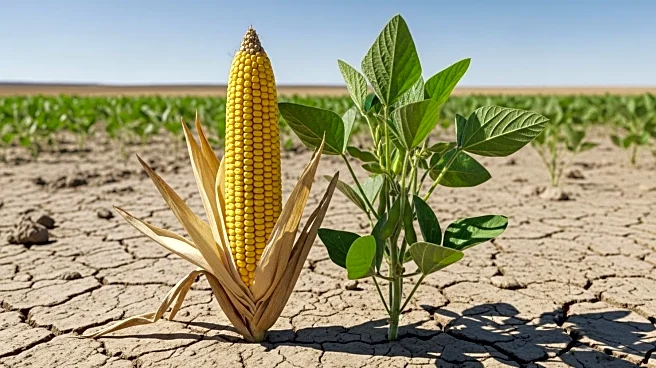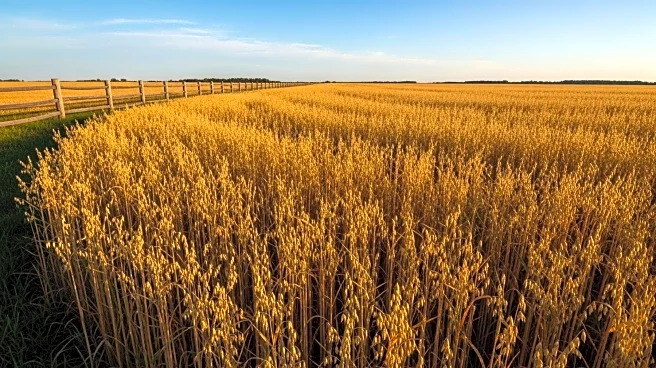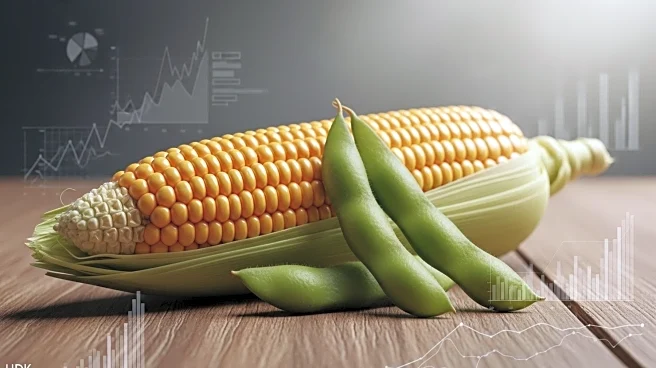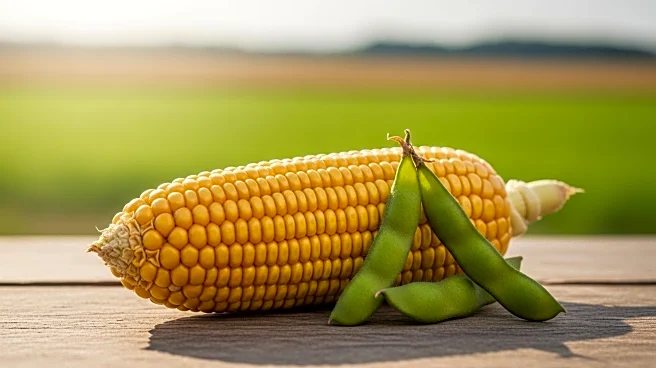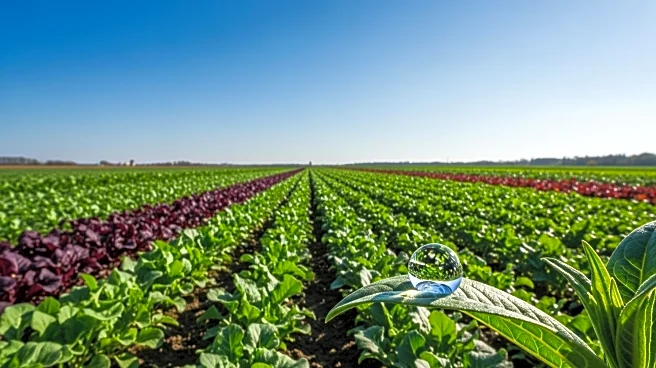What is the story about?
What's Happening?
The U.S. Department of Agriculture (USDA) is expected to make slight adjustments to its new-crop production estimates for soybeans and corn due to recent dry weather in the Midwest. The U.S. Drought Monitor reported that 14% of an 11-state area, including major producers Iowa and Illinois, is experiencing drought conditions, up from 4.5% the previous week. Despite the increase in yield, soybean output is projected to fall as the harvested area is expected to decrease. Corn production forecasts remain high, potentially setting records if realized. Meanwhile, soybean futures rose modestly in overnight trading, although gains were limited by speculation of reduced export forecasts due to slack demand, particularly from China.
Why It's Important?
The anticipated adjustments in soybean and corn production estimates are significant for U.S. agriculture, as they could impact market prices and export dynamics. The drought conditions in key producing states may lead to reduced supply, affecting both domestic and international markets. The potential decrease in soybean exports, especially to China, highlights ongoing trade tensions and their impact on U.S. agricultural exports. These developments could influence farmer decisions on crop planting and management, as well as broader economic implications for the agricultural sector.
What's Next?
The USDA's upcoming supply and demand reports will provide further clarity on production estimates and export forecasts. Stakeholders, including farmers and traders, will closely monitor these reports to adjust their strategies accordingly. The U.S. Drought Monitor's weekly updates will continue to be a critical resource for assessing the impact of weather conditions on crop production. Additionally, the ongoing trade dispute with China may lead to further adjustments in export strategies and negotiations.
Beyond the Headlines
The drought conditions and potential adjustments in production estimates underscore the vulnerability of agriculture to climate variability. This situation may prompt discussions on sustainable farming practices and investments in drought-resistant crops. The trade tensions with China also highlight the need for diversified export markets and strategies to mitigate risks associated with geopolitical factors.
AI Generated Content
Do you find this article useful?
